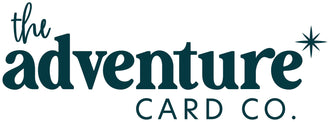Have you ever thought about making your own paintbrushes using materials from nature? With a little creativity, you can turn sticks, leaves, and other natural items into unique paintbrushes that create beautiful, one-of-a-kind art. In this activity, you’ll learn how to gather supplies from nature to craft your own paintbrushes and explore how different natural materials make different textures and patterns.
Why Make Nature Paintbrushes?
Creating paintbrushes from natural materials is a fun way to combine art and nature. It encourages you to think creatively and use what’s around you to make something special. Plus, it’s a great way to learn about the different textures and shapes found in the natural world.
What You’ll Need
- Sticks or twigs: These will be the handles of your paintbrushes.
- Natural materials: Look for items like leaves, pine needles, grass, feathers, or even small bundles of flowers.
- String or rubber bands: To attach the natural materials to your sticks.
- Paint: Use watercolour or tempera paint to test out your new brushes.
- Paper: To create your artwork.
Step-by-Step Instructions
- Go on a Nature Walk Start by going on a walk in a park, forest, or your backyard. Look for sticks or twigs that are about the length of a regular paintbrush. They should be sturdy and smooth enough to hold comfortably. Also, gather natural materials that you think would make interesting brush tips.
Fun Fact: Did you know that ancient people used natural items like feathers, animal hair, and plants to create tools for painting? You’re following in the footsteps of artists from long ago!
- Prepare Your Paintbrush Handles Once you’ve gathered your materials, choose a few sticks to use as the handles for your paintbrushes. If the sticks have rough spots, you can smooth them out by gently rubbing them with another stick or a rock.
- Attach the Natural Brush Tips Take one of your natural materials—like a bundle of grass, a leaf, or a feather—and attach it to the end of a stick using string or a rubber band. Wrap the string tightly so the material stays in place. You can experiment with different materials to see how each one works as a brush.
Fun Fact: Different natural materials will create different painting effects! For example, a brush made with soft leaves might make broad, smooth strokes, while one with pine needles could create thin, textured lines.
- Test Your Paintbrushes Now it’s time to see what your nature paintbrushes can do! Dip one of your new brushes into some paint and try it out on paper. Experiment with different strokes, patterns, and colours to see how each brush works. You might be surprised at the unique effects you can create!
- Create Your Masterpiece Use your nature paintbrushes to create a painting inspired by the natural world around you. Maybe you’ll paint a picture of the landscape you explored, or perhaps you’ll create a colourful abstract piece that shows off the different textures your brushes can make.
Safety Tips
- Be careful when gathering materials: Avoid touching plants you don’t recognize, as some may be harmful.
- Respect nature: Only take small amounts of materials, and leave plenty for the plants to continue growing.
Wrapping Up Your Art Adventure
Making paintbrushes from natural materials is a fun and creative way to explore the outdoors and create beautiful art at the same time. Every brush you make will be unique, just like the natural world that inspired it. So gather your supplies, let your imagination run wild, and see what amazing artwork you can create with nature’s paintbrushes!



